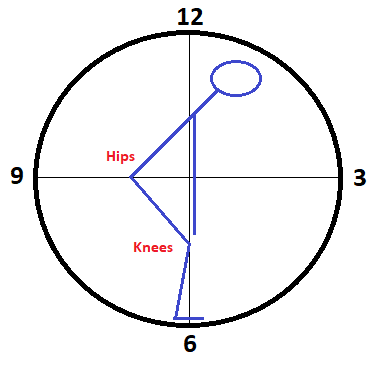What is a hip hinge? Why does everyone at BSP NOVA learn to hip hinge, and why is it useful? How many licks does it take to get to the center of a Tootsie Pop? The answers to those questions and more will be provided in this blog (okay, not the Tootsie Pop one).
The hip hinge not only allows us to train numerous exercises, but it’s a movement pattern we use in our daily life as well. So, what in the name of Coach Greg’s non-existent ankles is a hip hinge then?
As the term “hip hinge” implies, most of the movement during a hip hinge occurs by us hinging at our hips (I know I know, you weren’t expecting that). Although our knees bend minimally, we primarily use our hips to produce the movement. What we aren’t looking for is excessive movement in the lower/upper back, or excessive bending at the knees.
(Here is a video of what a hip hinge looks like)
Now that I’ve mentioned a couple things we aren’t looking for, let’s discuss some things we are looking for which are:
- starting and finishing tall and tight
- having some knee bend during the hinge
- reaching our hips back to 9 o’clock
- feeling hamstring tension towards the bottom of the hinge
- “driving the ground away” to stand back up
TRD
To teach our members to hip hinge effectively, we use what we call a coaching mantra (which is shown in the Handcuff Hip Hinge video). For the hip hinge, our mantra is TRD, which stands for:
T= Tall and Tight
R= Reach
D= Drive
Tall and Tight
Tall and Tight is both the position that we start and end the movement in. The “tall,” in tall and tight means our spine is neutral (no sad dog or macho man). The “tight,” In tall and tight comes from spreading the floor with our feet to create tension, and creating tension by crushing implement we are holding with our hands (tall and tight, macho man, and sad dog are explained in depth in a previous blog which can be found here: http://www.bspnova.com/alignment-keep-it-tall-and-tight-keep-it-right/).
Reach
We then reach our hips back to 9 o’clock until we feel hamstring tension (shown in image below).
Drive
Once we find that tension we drive the ground away to stand back up. An easy way to visualize the reach during a hip hinge is to imagine our body inside a clock as shown below.

This reaching to 9 o’clock puts us in the best position load the hamstrings and produce the most force.
Having hamstring tension during a hip hinge is of great importance because it serves as an indicator that we’re in a good position. If we don’t feel hamstring tension when hinging it means something with our position is off. Hamstring tension also let’s us know that we are loading the muscles we want to load, instead of something we don’t want to load (lower back for example).
As mentioned previously, not only do we use it a ton in our daily life when picking something up, sitting down in a chair, etc., but we use the hip hinge during numerous exercises as well. To name a few examples, we hip hinge during Romanian Deadlifts, Deadlifts, Rack/block pull deadlifts, KB swings, bent over rows, etc.
Let’s look at the hip hinge in action during different exercises.
Handcuff Hip Hinge:
The handcuff hip hinge is usually are go to when teaching the hip hinge. By having a Kettlebell (KB) behind you and trying to “tear the KB in half,” it creates tension in the upper back. Then, we can simply “reach our hips back into the KB,” and voila, a nice hip hinge.
KB Deadlift:
Our goal is to progress our members to the KB Deadlift as soon as they are able, whether elevated or on the floor. The choice to elevate the KB or not depends on what the best position for the individual is. This variation of the hip hinge allows us to keep the complexity low (compared to a barbell) and load the hinge fairly heavy. In fact, we don’t have our members deadlifting with a barbell unless they have passed our strength standard for the deadlift.
For the deadlift, members have to deadlift the 60kg KB for 2 sets of 8 reps. This ensure they have the strength and skill necessary to move on to hip hinging with a barbell.
Barbell Deadlift:
As mentioned, barbell exercises are only performed after the strength standard has been passed. Once the strength standard has been passed though, it opens up lots of variations for our members. This could mean performing RDL’s, Rack Pulls, Block Pulls, Hex Bar Deadlifts, or Deadlifts from the floor depending on their mobility.
KB Swing:
A KB swing is one of the more advanced hip hinge variations because it is an explosive movement. During a swing there is a fast eccentric (lowering) and concentric (lifting) portion, which requires a much higher skill level compared to other hip hinge exercises.
Bent Over Row:
We also must hold a hip hinge to perform certain exercises like a bent over row. Therefore, it’s a prerequisite to be skilled at hip hinging before performing bent over rows.
Are you hip to hinge?
Learning to hip hinge properly is one of the biggest return on investments you can make from your time at the gym. One could even say, that some of your progress in the gym hinges on how well you hip hinge. The hip hinge allows you to safely train numerous exercises and will aid you in performing the daily activities you already do.
